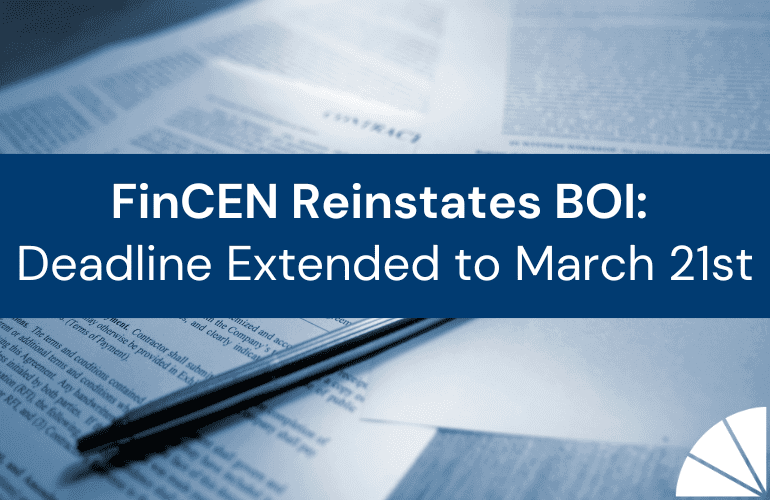
As an employer, your workforce is an investment in human capital, which is the economic value your employees bring to your company by way of their knowledge, experience, skills, and abilities. For key employees, it’s the “it factor” they call upon to forge and strengthen customer relationships, keep day-to-day operations running smoothly, maintain healthy cash flow, increase your company’s value, and pave the way for long-term success. As they are your greatest asset, key employees aren’t interchangeable, nor are they easily replaced. But following a few best practices in key employee incentive planning can help you attract, motivate, and retain your leading talent.
Start by taking stock of both your short-term and long-term goals and prioritizing them to align your incentive programs accordingly.
First and foremost, key employee incentives planning should align with your strategic objectives. Whether you want to increase productivity, improve engagement, teamwork, and retention, attract top talent, or increase your company’s value ahead of a sale or transfer, your key employee incentive programs should be designed to help you reach and possibly exceed those goals.
For example, if your number-one priority is to increase productivity, you may consider short-term incentives like annual incentive plans to reward key employees based on their performance in accomplishing a specific result. On the other hand, incentivizing key employees with a sale or stay bonus may be a better option if a third-party sale is in your company’s near future. Keeping your key players intact leading up to, through, and after the sale can help you increase your business’s value and ultimate sale price. Buyers appreciate the value of a well-oiled machine.
Evaluate how your employees contribute to the value of your business and identify who your key employees are and what drives them.
Based on your goals, consider which behaviors and actions you need to promote the most, Consider each employee’s impact on client relationships, worth on the management or post-sale succession team, employee morale, operational efficiency, productivity, and financial health. And make sure you are setting performance metrics based on what truly incentivizes your key players. You need access to benchmark data to find out what incentive programs others in your industry are offering and what incentives are held in the highest regard by potential candidates and established key employees.
Key employees must recognize the ultimate benefit as something worth working toward, even when times are tough. So it’s vital for business owners to understand that these types of incentives need to be substantial to be effective. Suppose you’re considering retention bonuses to keep key employees in place through a difficult or transitional period. In this case, according to Indeed, these bonuses average anywhere from 10-25% of the employee’s annual base compensation.
Determining the right value of a reward depends on the nature and priority of the goal you’re trying to reach, the type of incentive plan you’re considering, and the time frame involved. For example, in the short-term, project bonuses and team incentive plans may vary based on an individual or a group’s achievements over a specified period.
In the long term, some key employees may be more incentivized by the promise of ownership. Based on your timeline and succession plan, you may want to consider awarding stock options or even an employee stock ownership plan (ESOP) in lieu of awarding vested equity shares in your company.
*Please be careful when awarding stock to employees and especially how you document the process. We have worked with many clients who have awarded stock to key employees and dealt with problems when they leave or are terminated from the company. It is very difficult to unwind those positions if they were not documented thoroughly at the onset (and many are not). Options are so much cleaner. They have no voting rights or benefits of ownership until/if there is a sale – if they leave the company they do not retain the option.
Ensure you understand the benefits and drawbacks before implementing any key employee incentive.
Once you know what drives your key employees and supports your goals, you want to ensure you implement your plan without any undesirable or unintended consequences. Incentive stock options qualify for special favorable tax treatment by the IRS, and the value is not taxed to the employee, nor is it deducted by the employer. Non-qualified stock options are more common. They are also unique because they can be given to anyone who provides services to the company, including your board of directors, advisors, and independent contractors. In this case, your company receives a tax deduction when the employee exercises the stock options. The employee then becomes responsible for ordinary income tax on the difference between the shares’ exercise and market prices. And any price appreciation after that would be taxed as a capital gain.
Suppose you prefer not to share ownership with your key employees. In that case, a non-qualified deferred compensation (NQDC) plan is a non-ownership alternative that is still a proven long-term retention tool. NQDC plans include supplemental executive retirement plans (SERPs), voluntary deferral plans, equity arrangements, and corporate-owned life insurance (COLI) policies, each with benefits and drawbacks for the business and the key employee.
If you choose to implement a COLI, you would be the insurance policy owner. As such, you may borrow against the policy and use the borrowed funds to pay the policy premium if you so choose. SERPs are similar in nature, as the employee generally buys the insurance policy, pays the premiums, and has access to its cash value, and the employee will receive supplemental retirement income. Once the employee receives COLI or SERP income in retirement, the benefit is taxable as gross income. However, the employer receives a tax deduction.
Phantom stock and a stock appreciation rights (SAR) program are additional ways to provide an owner-like benefit to employees without giving up actual stock ownership. With a phantom stock plan, your employees are rewarded when the company does well, but they do not incur the tax or legal obligations associated with ownership. However, payments on the phantom units are treated as compensation to the employee. A SAR plan is similar. However, in this case, a bonus payment may be made in actual shares of company stock, but the initial grant of SARs does not convey actual ownership.
LGA’s approach to client service is tireless, independent, objective, and battle-tested.
Our business advisory, tax, and valuation specialists work with business owners to develop, implement, and execute key employee incentive plans that best meet their personal and business financial needs and recruiting, retention, and succession planning goals. I help business owners optimize their efforts by providing comprehensive and customized financial planning, risk assessment, business advisory, and tax planning services. If you’re ready to talk strategy, contact me today!
If you missed them, check out the previous articles in LGA’s Best Practices Series:
Part I: Standard Operating Procedures & Adapting to New Environments
Part II: Succession Planning for Key Members of Your Finance & Executive Teams
Part III: Capital Structure – Why Your Business’s Debt & Equity Blend Matters
by Kenneth D. Segal, Partner & Managing Director of Business Advisory Services






